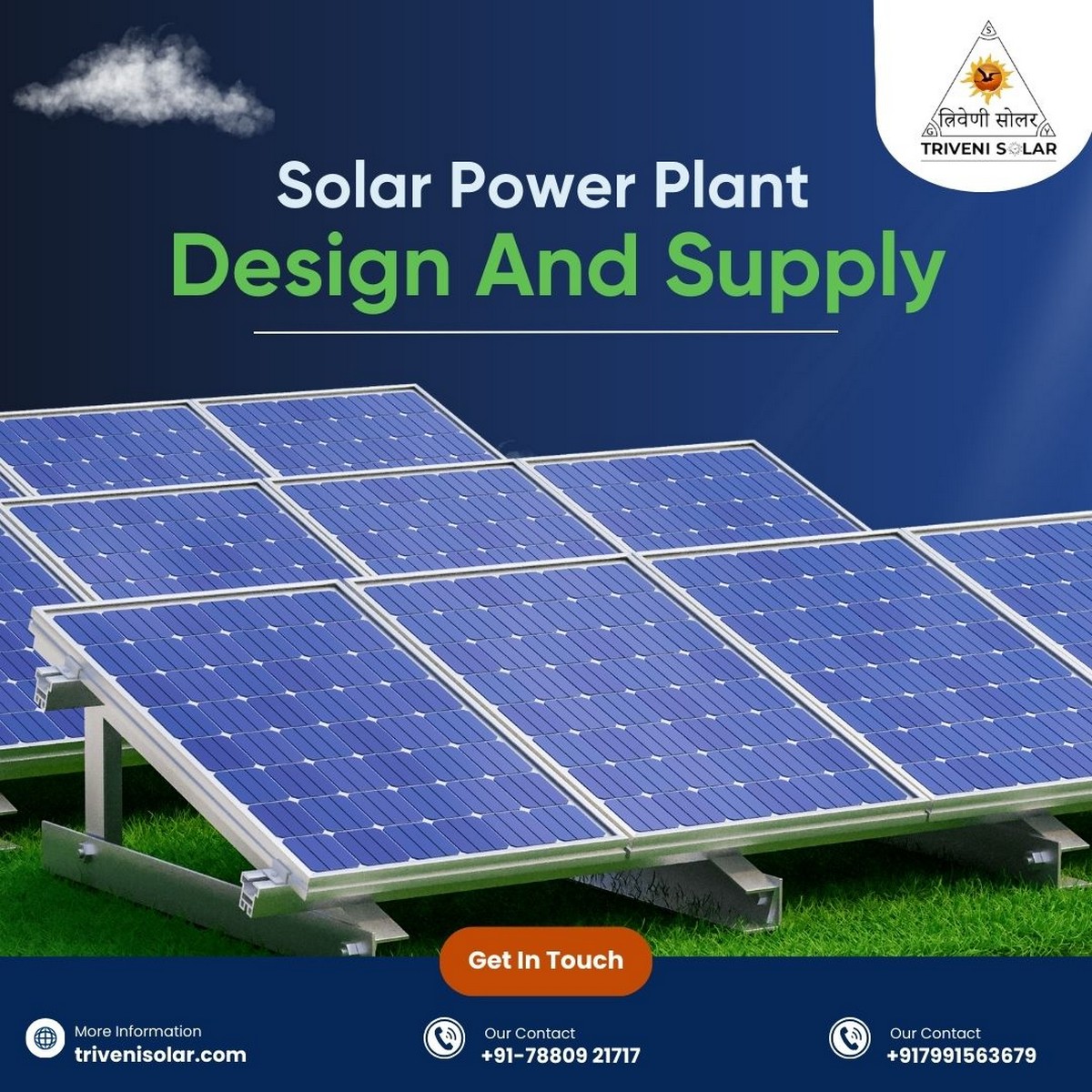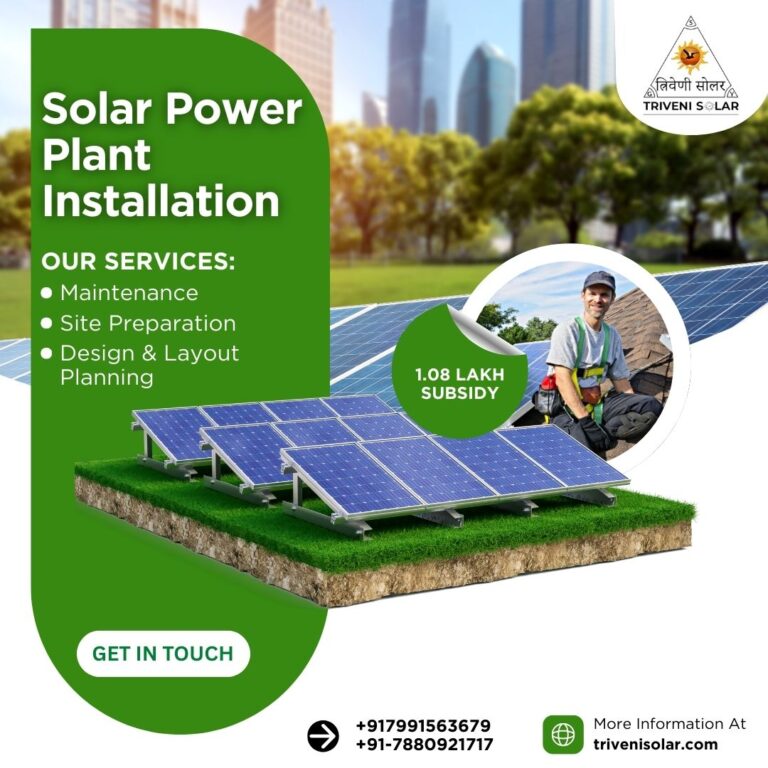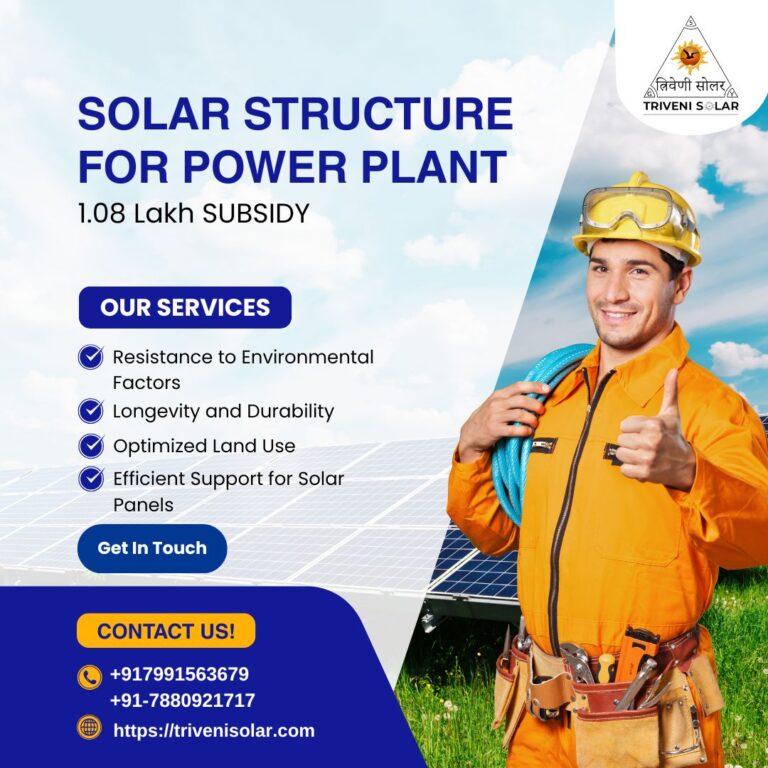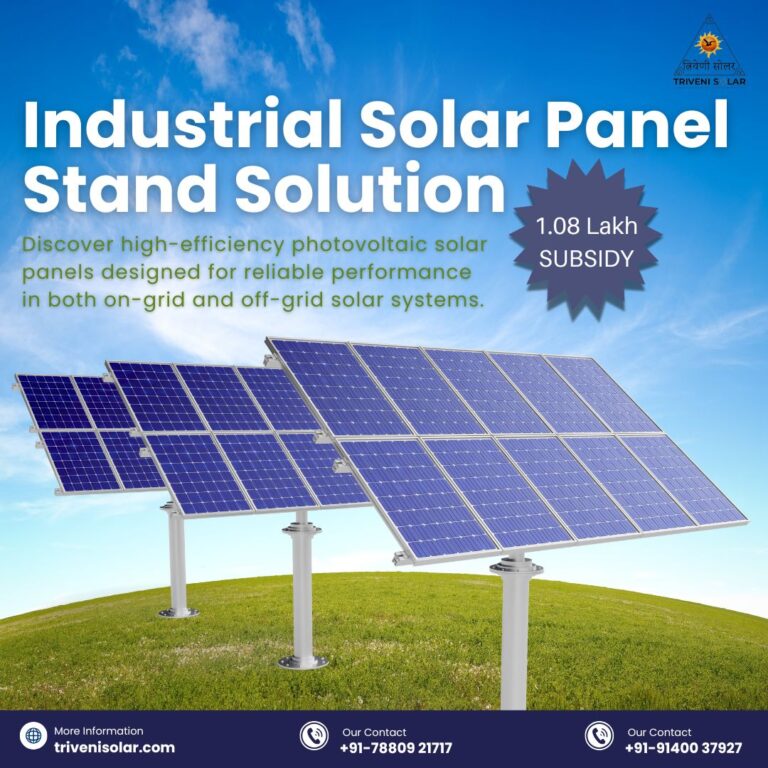A solar power plant design and supply project in India involves site analysis, engineering, and EPC execution to ensure reliable, cost-efficient renewable energy. With government subsidies and quality equipment sourcing, companies like Triveni Solar deliver turnkey solar solutions with maximum ROI.
Table of Contents
- Introduction
- What is a Solar Power Plant?
- Why Design Matters in Solar Projects
- Key Factors in Solar Power Plant Design
- Solar Power Plant Supply & EPC Services
- Types of Solar Power Plants in India
- Step-by-Step Solar Power Plant Installation Process
- Cost of Solar Power Plant in India
- ROI & Payback Period
- Government Policies, Subsidies & Incentives
- Case Study: Triveni Solar Project Insights
- Common Mistakes in Solar Plant Design & How to Avoid Them
- Comparison: On-Grid vs Off-Grid vs Hybrid
- FAQ Section
- Conclusion + CTA
Introduction
India is witnessing a rapid energy transformation, and solar power is leading the way. With ambitious government targets of 500 GW of renewable energy capacity by 2030, solar power plants are no longer optional—they’re essential. But building a solar power plant requires more than just installing panels. It demands expert design and supply
What is a Solar Power Plant?
A solar power plant is a large-scale system that converts sunlight into electricity using photovoltaic (PV) panels or concentrated solar power (CSP). These plants can power homes, industries, and even entire towns. Unlike rooftop systems, utility-scale solar plants often cover acres of land and connect directly to the grid.
Why Design Matters in Solar Projects
The design of a solar power plant is the backbone of its performance. A poor design leads to reduced efficiency, safety issues, and financial losses. A well-engineered design ensures:
- Maximum Efficiency: Proper orientation and tilt maximize sunlight absorption.
- Cost Optimization: Right sizing reduces unnecessary expenses.
- Future Scalability: Allows easy expansion as demand grows.
- Compliance: Meets safety and grid regulations.
Key Factors in Solar Power Plant Design
- Site Survey & Feasibility Study: Identifies shading, soil type, and solar radiation.
- Load Calculation: Determines energy needs for correct sizing.
- Panel & Inverter Selection: Balances efficiency and cost.
- Layout Design: Prevents shading and optimizes cable routes.
- Grid Connectivity: Ensures smooth power integration.
Solar Power Plant Supply & EPC Services
Supply is as critical as design. High-quality panels, inverters, and mounting structures define the plant’s durability. That’s where EPC contractors like Triveni Solar make the difference by offering:
- Engineering design tailored to site conditions
- Procurement of Tier-1 solar modules & inverters
- Turnkey construction & commissioning
- After-sales maintenance & support

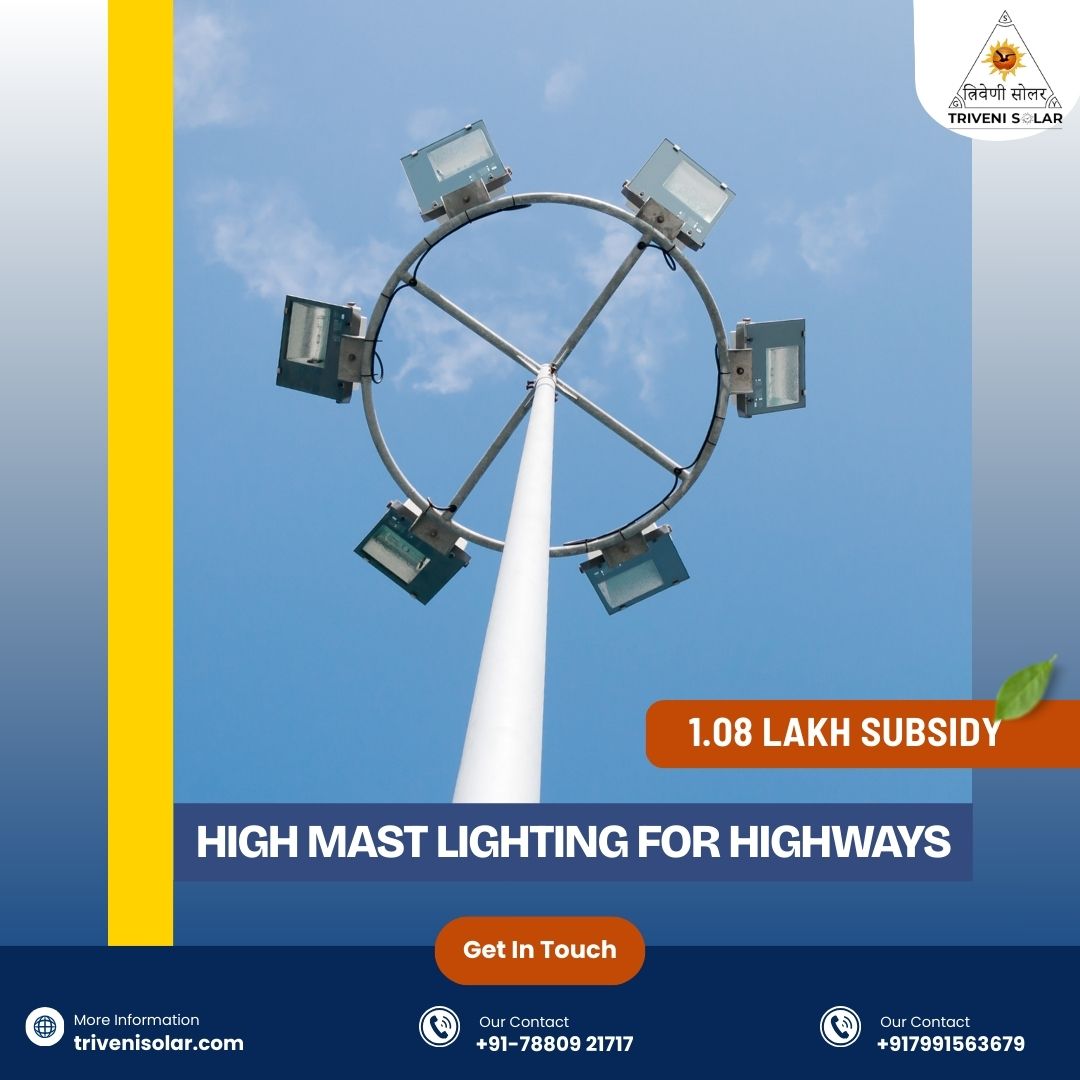
Types of Solar Power Plants in India
Solar projects are classified into three main types:
- On-Grid: Connected directly to the utility grid, suitable for urban areas.
- Off-Grid: Standalone systems with batteries, ideal for rural/remote locations.
- Hybrid: Combines on-grid with battery storage for reliability.
Step-by-Step Solar Power Plant Installation Process
- Initial consultation & energy audit
- System design & load analysis
- Procurement of panels, inverters, and BOS
- Civil foundation & electrical wiring
- Installation & commissioning
- Performance testing & handover
Cost of Solar Power Plant in India
The cost of a solar power plant in India varies by size, location, and equipment quality. Below is a sample cost breakdown (2025 estimates):
| System Size | Approx. Cost (INR) | Application |
|---|---|---|
| 10 kW | ₹6–7 Lakhs | Small business / Residential |
| 100 kW | ₹55 – 65 Lakhs | Commercial/Industrial |
| 1 MW | ₹4.5–5Crore | Utility / Industrial |
ROI & Payback Period
With subsidies and net metering, most solar power plants in India achieve ROI within 4–6 years. Below is a comparison:
| Project Type | Payback Period | Expected ROI (20 Years) |
|---|---|---|
| Residential (10 kW) | 4–5 years | 300–400% |
| Commercial (100 kW) | 5–6 years | 350–450% |
| Utility (1 MW) | 6–7 years | 500%+ |
Government Policies, Subsidies & Incentives
- MNRE Subsidies: Up to 40% for residential systems (up to 3 kW).
- Net Metering: Sell excess power to the grid for bill savings.
- Accelerated Depreciation: 40% benefit for businesses.
- GST Concessions: Solar components taxed at 5%.
Case Study: Triveni Solar Project Insights
Example: A 100 kW rooftop project for a textile factory in Uttar Pradesh.
- Challenge: High electricity bills, unreliable grid supply.
- Solution: Hybrid solar system with battery backup.
- Result: 60% reduction in energy costs, ROI in 5 years.
Common Mistakes in Solar Plant Design & How to Avoid Them
- Ignoring site survey and shading analysis
- Wrong inverter-panel matching
- Overlooking O&M (operations & maintenance)
- Choosing low-quality suppliers
Comparison: On-Grid vs Off-Grid vs Hybrid
| Type | Pros | Cons | Best For |
|---|---|---|---|
| On-Grid | Low cost, net metering benefits | No power during outages | Urban, commercial |
| Off-Grid | Independent and reliable in remote areas | High battery cost | Rural, no-grid areas |
| Hybrid | Best of both worlds, backup and savings | Higher upfront cost | Industries, critical facilities |
FAQ Section
What is the cost of a 1 MW solar power plant in India?
A 1 MW solar plant typically costs ₹4.5–5crore, depending on equipment quality and land location.
How long does it take to install a solar power plant?
Small projects (10–50 kW) take 1–2 months, while large utility projects (1 MW+) may take 6–8 months.
What subsidies are available for solar power in India?
Residential projects can get up to 40% subsidy from MNRE. Commercial projects benefit from tax incentives and net metering.
How much land is required for a 1MW solar plant?
Typically, 1MW requires about 4–5 acres of shadow-free land.
How long do solar panels last?
Most Tier-1 solar panels last 25+ years with efficiency warranties.
Conclusion + Call-to-Action
Designing and supplying a solar power plant requires technical expertise, quality procurement, and flawless execution. With the right partner, your solar investment can deliver clean energy and high ROI for decades.
Triveni Solar specializes in complete solar power plant design and supply solutions in India. From site survey to commissioning, we ensure efficiency, cost savings, and long-term reliability.

